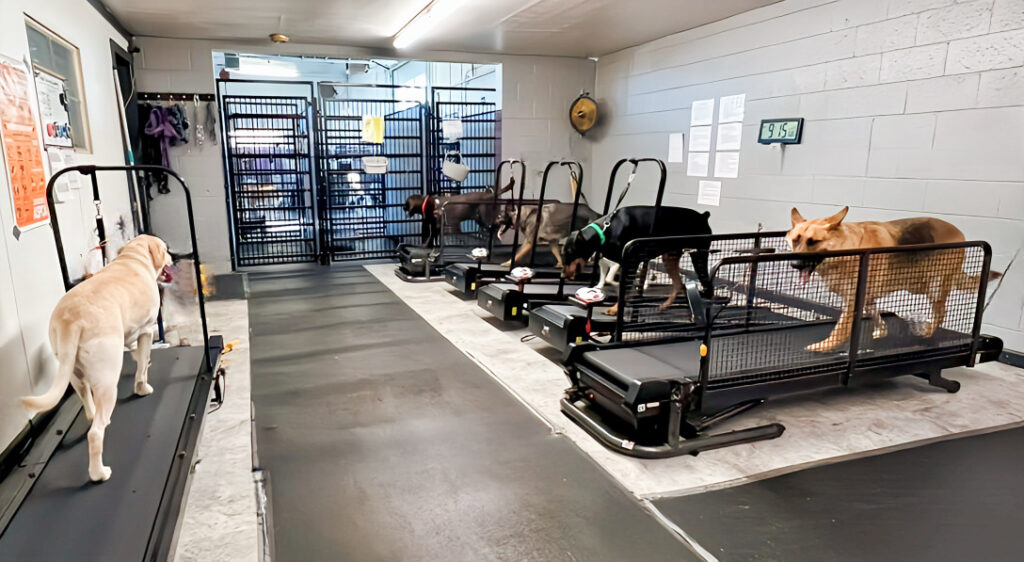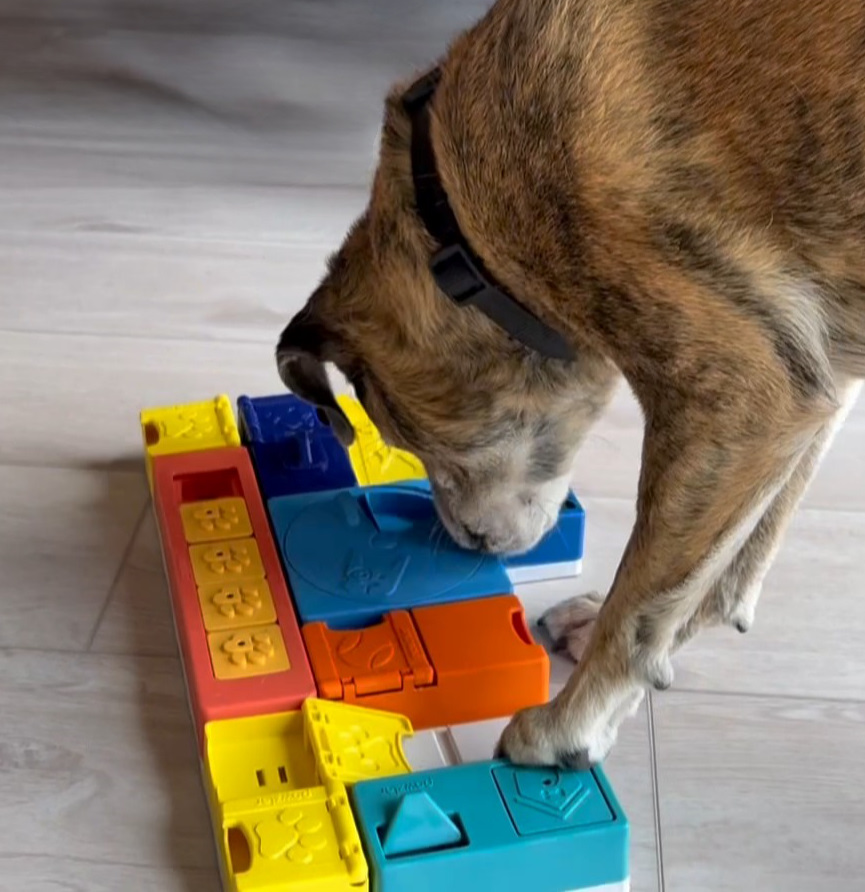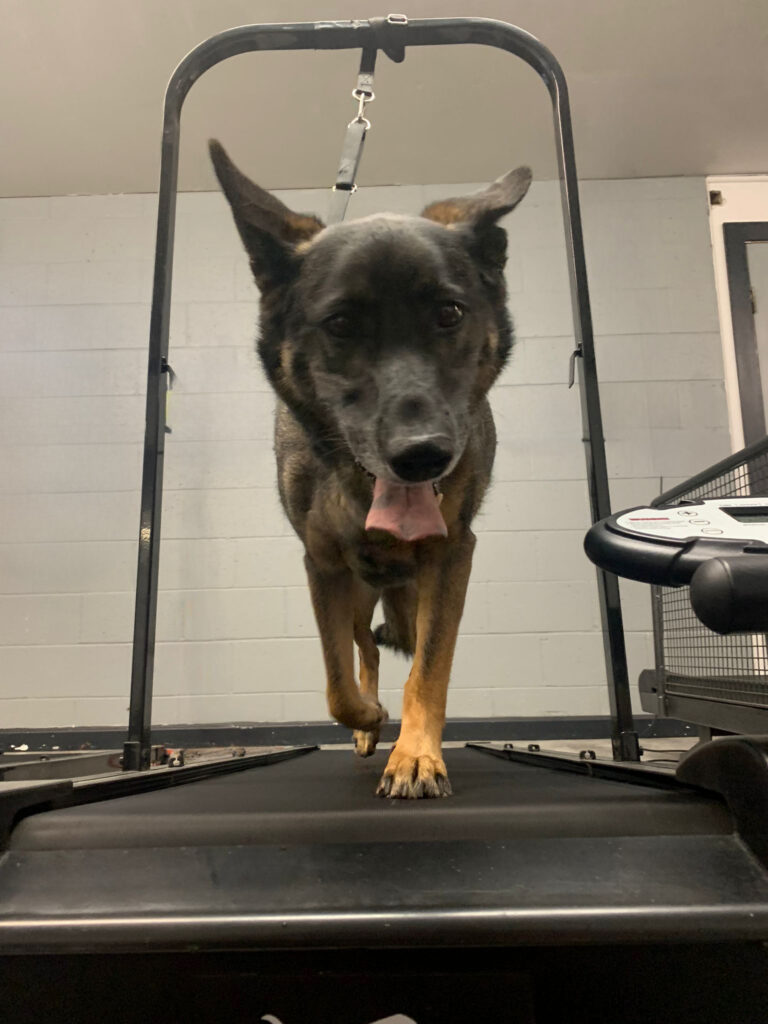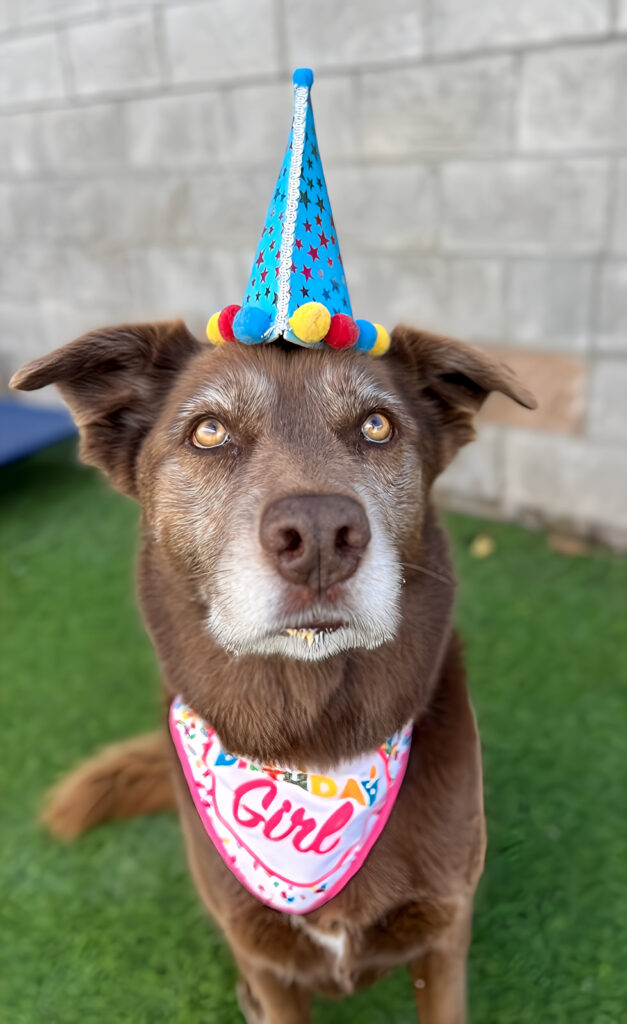How to find the right day care/boarding facility for your dog
As many dog owners know, finding a day care or boarding facility that fits your dog’s needs can be challenging. There are many options, each with its own pros and cons. Here are some tips for what to consider when selecting a facility for your dog’s day care and boarding needs.
First and foremost, you know your dog better than anyone else. You know their likes, dislikes, and stressors. We recommend examining the following three areas to compare doggie facilities.
- Ability to dissipate your dog’s physical energy and mental boredom
- Safety protocols
- Boarding environment
Energy Dissipation and Mental Enrichment
There are many factors to consider when determining whether a facility will bring your dog joy. Dogs are inherently social creatures, and most find joy playing with other dogs. Dogs of various ages, breeds, and sizes have different energy levels, from young, rambunctious hunting dogs to older, more passive toy breeds. The way a facility separates dogs into play groups will have the greatest impact on your dog’s willingness to interact with other dogs. Smaller groups tend to work best for lower energy and smaller dogs, allowing them to be more engaged in play without fear or anxiety. Additionally, facilities that customize groups based on previous interactions between specific dogs create harmonious and playful groups. This involves tracking each dog’s friends to put into the same group, and separating dogs that don’t get along. Facilities that don’t offer small, customized groups are more likely to instigate anxiety, fear aggression, and injuries.

Another aspect of dog interaction that can elicit joy is exposure to multiple stimulating environments and enrichment activities throughout the day. Like humans, dogs don’t want to be stuck in one room all day. Nor do all dogs want to chase other dogs all day. Allowing dogs to rotate through several environments and providing different stimuli in each location keep dogs moving and add a mental facet to the physical stimulation. Introducing different activities in different locations also helps keep day care fun and exciting for your dog.




Safety Protocols
One of the biggest determinants of safety in a dog facility is the ratio of dogs to staff. The fewer the number of dogs per human, the more attention available to your dog and the greater the ability for staff to address budding issues quickly. Aggression between dogs almost always is preceded by warning signs. Staff members trained to recognize each dog’s body language can step in to prevent aggression before it happens. This requires smaller groups to ensure the handler isn’t being overwhelmed with too many dogs.

While we never want to think about a potentially traumatic physical altercation between dogs, dog parents should also find out about the facility’s protocol if a dog fight occurs. Physically separating fighting dogs is the most effective means for rapidly stopping aggression and ensuring that all dogs in the group are safe. The longer an altercation continues, the greater the likelihood of more dogs joining in and sustaining injuries. Some facilities don’t allow staff to intervene in altercations and use spray bottles or whistles instead. This is the safest approach for facilities without experienced staff. Human intervention during aggression requires an advanced level of knowledge in dog physiology and behavior, which requires the facility to invest in, and be committed to, staff training.
Another area of safety that should be examined is how play areas are outfitted. Nonslip flooring is important for dogs to be able to play without injuries to joints, such as ACL tears, hip dysplasia, etc. Cement flooring is slippery for dogs’ foot pads, and one wrong move can result in injuries to your pet. The facility should also have a fire plan, which includes safe containment area(s) outside the building where dogs can be kept safely in the event of a fire.
Medical protocols also should be considered. Vaccination requirements and tracking are priorities for stopping the spread of contagious ailments. Additional contagion mitigation efforts should be in place for shared drinking water and waste cleanup. Bodily fluids are the most common transmission method for dogs to contract illnesses, and facilities with multiple dogs need to have strict mitigation methods in place to stop transmission.
Lastly, you should understand the facility’s protocols on dogs’ elimination. Specifically, does the facility have areas where dogs can relieve themselves without interfering with housebreaking? Dogs have simple ways of determining inside and outside — by scent, temperature, and texture. If a day care facility does not provide an area that feels like outside, dogs may lose their potty training, or, worse, hold it for too long, leading to urinary tract infections.
Boarding Environment
Before boarding your dog, it’s important to understand what their boarding day includes. The most important feature is the overnight monitoring. Many facilities leave dogs in their kennels, with no human supervision, throughout the night. Issues such as sickness, injury, facility damage (loss of AC/heat, fire, etc.) require immediate attention, which won’t be provided if the facility is unmanned.
Other considerations include:
- How many dogs are in each boarding room? The more dogs in a space, the louder the environment could be, interfering with your dog’s sleep time.
- What does a boarding dog do all day? Does boarding include day care? Boarding dogs have an even greater need for energy dissipation and stimulation, to provide stress release each day.
- How are medications, food, and water provided and tracked? Also, when and where are dogs provided potty breaks throughout the day and night, if necessary?

What Real World Canine Offers
Real World Canine, located at 1590 E. Second St., next to the Renown Hospital complex, was designed to provide your dogs with a fulfilling and safe experience during day care, boarding, and training.
RWC divides dogs into groups of 20 or fewer. The facility has four play areas, where each group rotates throughout the day. There’s a treadmill area, where dogs get up to 30 minutes of treadmill time each day. There is a large indoor play area, a turfed area, and our newly installed 35-by-60-foot covered outdoor play area. All indoor areas have wall-to-wall rubber mats, and outdoor areas are wall-to-wall turfed. Dogs rotate through each area every day, having access to turfed areas (every 1 to 2 hours), which provides easy access for bowel and bladder relief (ensuring maintenance of housebreaking).
RWC also is in the process of installing a 20-by-30-foot in-ground pool and enclosure building, which will allow year-round use. The pool will become the fifth play area, providing all dogs with the ability to swim during each visit.
All RWC handlers are certified in dog behavior and hands-on restraint techniques. Handlers are trained to identify body language signaling potential aggression and to separate the dogs, including possible cool-down containment. If dogs in the group become aggressive, the handlers will immediately separate them while calling for backup. There are always at least two people available to respond to issues throughout the day, without leaving any dogs in groups unsupervised. RWC does not leave dogs unsupervised at any time. Staff is on site 365 days a year, 24 hours a day.
RWC implements bedroom boarding, where the boarding dogs are free to roam around a large bedroom and sleep on two or three connected, king-sized mattresses while snuggling with the boarding technician all night long. The boarding room has a television and also can play music, creating a homey environment in which to relax. Boarding dogs are limited to 15 per night, with a second bedroom boarding space available if demand exceeds 15. All feedings and medications are tracked daily. All boarding packages include daycare the day before the sleepover. All boarding rooms are just one door away from a contained turfed area, so potty breaks can be accommodated before bedtime, first thing in the morning, and throughout the night for dogs with bladder issues.
RWC’s contaminant/viral containment policy calls for all dogs to have up-to-date vaccinations, including for rabies, bordetella, and DHPP. All water buckets are emptied and refilled every 15 minutes and sanitized overnight. All turfed areas are installed on top of fluid migration platforms and are rinsed after defecation or urination occurs. All turf is decontaminated every evening using a biological agent.
RWC is designed to optimally expend your dog’s physical energy and mental boredom, address the unique safety concerns that dogs require, and provide a relaxing boarding experience.


